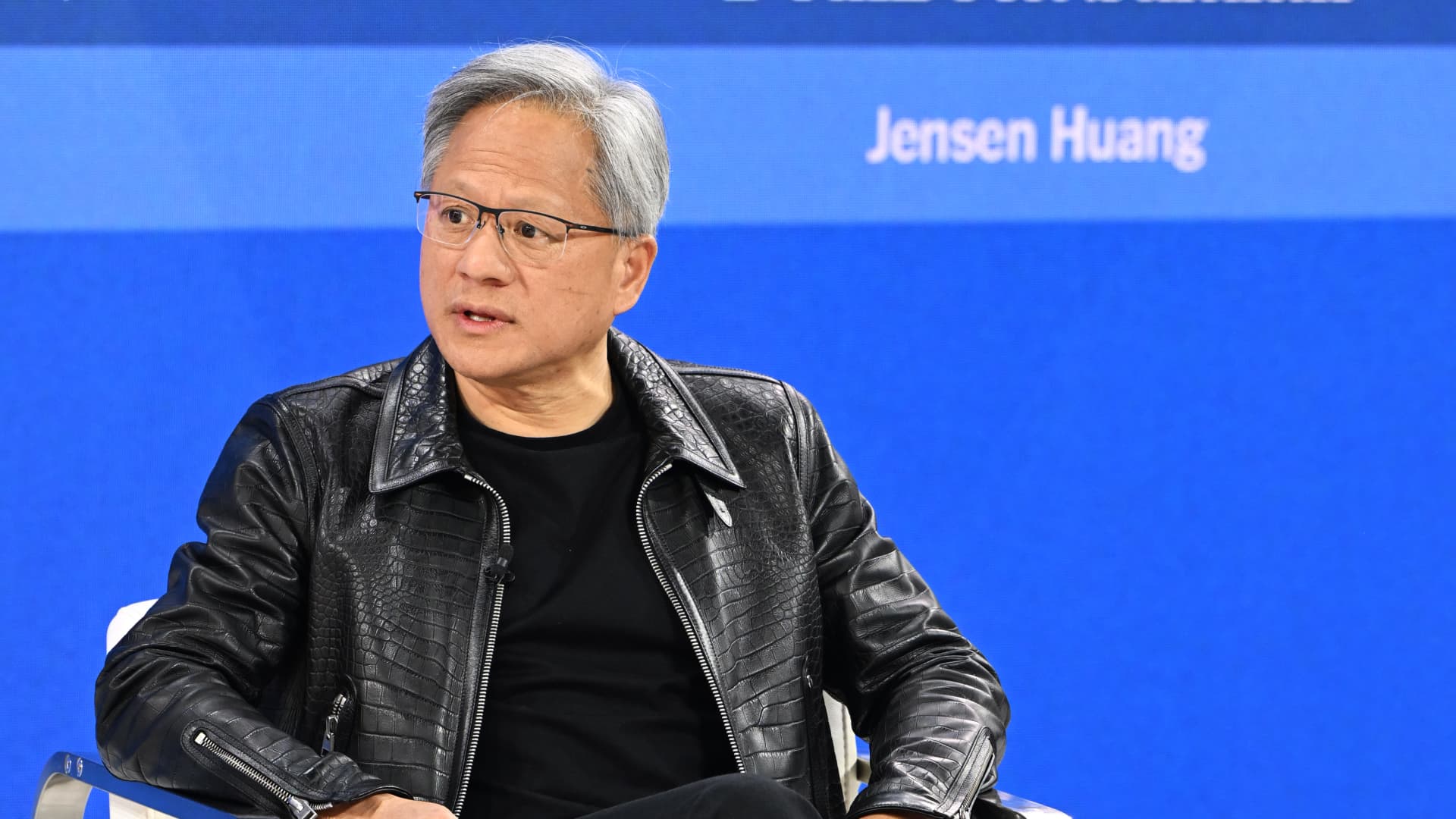
Jensen Huang speaks onstage during The New York Times Dealbook Summit 2023 at Jazz at Lincoln Center on November 29, 2023 in New York City.
Slaven Vlasic | Getty Images
Nvidia CEO Jensen Huang offered a glimpse into his unusual management style, including having “50 direct reports,” in an interview with CNBC’s Andrew Ross Sorkin on Wednesday.
Huang co-founded Nvidia in 1993, and as the chipmaker’s stock soars this year because of its central role in the AI boom, his leadership style is being studied and emulated in the tradition of other technology founder-operators such as Apple’s Steve Jobs or Meta’s Mark Zuckerberg.
Huang says that he has so many direct reports — most executives only have 10 or so — because it keeps Nvidia from developing unnecessary layers of management.
“The more direct reports a CEO has, the less layers are in the company. It allows us to keep information fluid,” Huang said, adding that it makes Nvidia perform better.
Huang said senior executives should be able to operate independently and should require “very little management.”
“The people that report to the CEO should require the least amount of pampering and so I don’t think they need life advice. I don’t think they need career guidance,” Huang said. “They should be at the top of their game, incredibly good at their craft.”
Instead of having a strict management hierarchy, Huang also likes to get information directly from rank-and-file staff by receiving short weekly emails that list the five most important things any given employee is working on, according to a recent New Yorker profile.
Huang also likes to write hundreds of short emails per day to his staff, many of which are only a few words long, according to the profile.
Nvidia stock has risen over 228% so far this year, driven by insatiable demand for the company’s high-end graphics processors (GPUs), which are used to train and operate AI models like OpenAI’s ChatGPT.
Nvidia’s success in AI GPUs this year is the result of several long-shot bets over the past decades to develop software and tools to transform chips previously designed for 3D gaming into AI powerhouses, which has given it a lead over other chipmakers such as AMD.
The company continues to expect huge growth in sales for AI chips, but is facing export restrictions in China that could hamper a major growth market.





